Here’s the latest list of recommended AMD motherboards a guide for motherboard buyers.
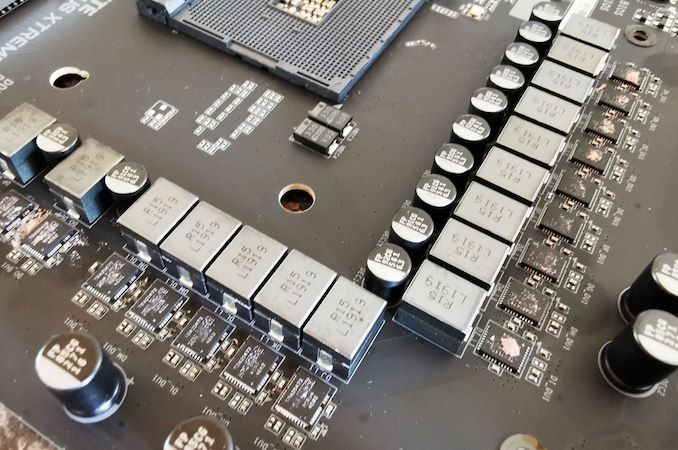
t’s no surprise to see AMD doing very well at present, and the new Ryzen 5000 series of processors have been a big hit. The Zen 3 based chips include a newly designed core, with great performance in both single and multi-threaded applications. The majority of the big motherboard vendors announced a rollout of new firmware designed to support the new processors on X570 and B550 chipsets, with 400-series chipsets to follow, so that certainly makes things interesting for users looking to buy AM4. Here are our AMD based motherboard selections for December 2020.
Our recommendations for motherboards are based entirely on my personal and professional opinion. There are notably many different motherboards across the AMD chipsets, including B450, X570, and more recently, B550, so I selected my top four picks based on the four market segments. Much of our attention is on consumer desktop boards (socket AM4), though we are well aware of the benefits of TRX40 and Threadripper. We may look to include a HEDT based segment in the future in future guides if there is interest from our readership to include it.
As we navigate our way through a tumultuous time regarding the global Coronavirus pandemic, it is certainly having a negative effect on the computer hardware market. Not only has this had an issue on stock levels, but in same cases, the current market price too. Specifically for motherboard vendors, the stock has been flowing consistently and well throughout the retail channels. Some chipsets have had a resurgence due to BIOS flashes being made available.
Some boards have had stock issues, so we’ve adjusted our guide slightly to accommodate for this. It’s also worth noting that B550 is generally considered the budget AM4 platform, but the pricing has been a little topsy-turvy, with some boards reaching (and even surpassing) the prices of low-end X570 boards. AMD has also recently announced its entry-level A520 chipset, with some very price conscientious models to select from. All of these points have been taken into consideration in our December 2020 guide for the AMD selections.
Best Sweet Spot
ASUS ROG Strix B550-F Gaming Wi-Fi
In our Best Sweet Spot, we’ve opted for a board with plenty of functionality and features while also benefiting from PCIe 4.0. Boards based on the B550 chipset offer partial PCIe 4.0 support, with Ryzen CPUs driving both a single full-length PCIe x16 slot and a PCIe x4 M.2 slot at PCIe 4.0 speeds. We’ve seen one of the best B550 boards we have reviewed to date is the ASUS ROG Strix B550-F Gaming WIFI, a higher-end B550 board that received our Recommended by AnandTech award.
You can read our full review here:
The ASUS ROG Strix B550-F Gaming Wi-Fi Motherboard Review: Premium Value
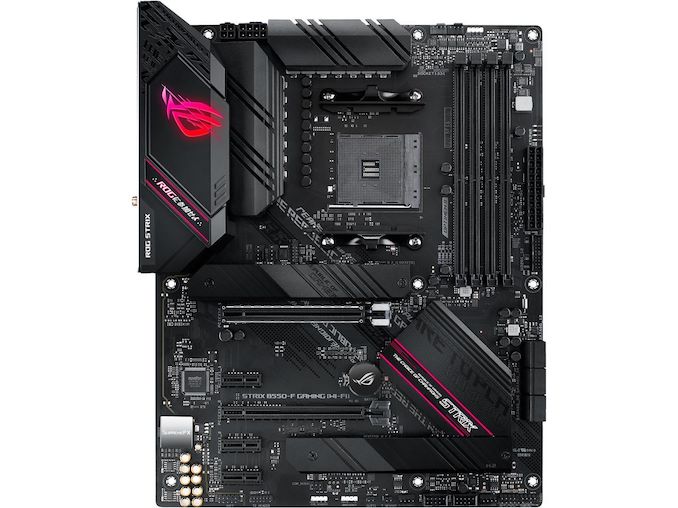
What makes it our pick over the other 500-series is its solid level of quality and performance offered at a very competitive price point. It includes two PCIe M.2 slots, with the top slot operating at PCIe 4.0 x4 and the second slot at PCIe 3.0 x4. The ASUS model also benefits from a stacked rear panel with two USB 3.2 G2 ports (Type A/C), DisplayPort, and HDMI video outputs (for use with APUs) and the capability to install up to six fans.
The ASUS ROG Strix B550-F Gaming Wi-Fi includes an Intel-based networking pairing, with a premium 2.5 GbE Ethernet controller and Wi-Fi 6 interface. The onboard audio is also premium, with ASUS’s tweaked SupremeFX S1200A HD audio codec taking care of business. There are also four memory slots with support for up to DDR4-5100, which is impressive, with a maximum capacity of 128 GB. For a mid-range model, this is a stack of features, and considering similarly priced X570 models (sub $250) that include a similar controller set are non-existent, it puts the ASUS model in good standing.
Touching more on the competition, the B550-F Gaming Wi-Fi is $210, which is MSRP, and at present is looking to be the best ATX sized AM4 option in this price range. The MSI B550 Gaming Carbon is more expensive with a similar feature set at $220, while the GIGABYTE B550 Aorus Pro AC can be had for around $190. Having seen the ASUS model on our test bench and its superb performance in out of the box DPC latency, competitive CPU, and gaming performance. Looking forward to Zen 3, we tested the thermals of its efficiently designed power delivery, which sets the ROG Strix B550-F Gaming Wi-Fi as our mid-range pick.
The Value Option
ASRock B550 Phantom Gaming 4/AC
In previous guides, the value options have all been B450 models, due to the more expensive B550 options being a bit too much for true ‘value.’ However, the B450 range seems to be reducing in stock, causing prices to increase. So we’ve chosen ASRock’s B550 Phantom Gaming 4/AC, which represents AM4’s entry-level gaming series as well as PCIe 4.0.
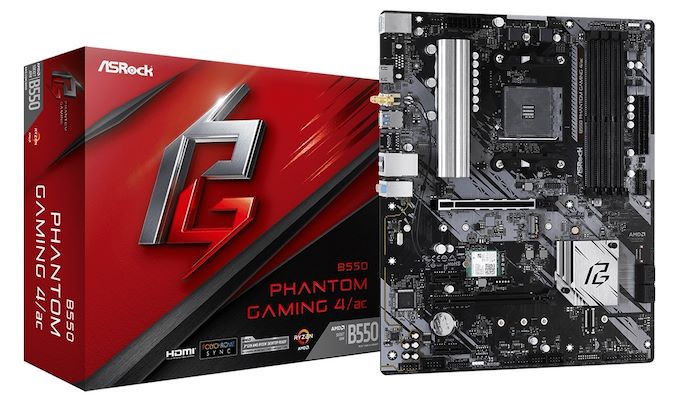
Even though it is one of the cheapest B550 boards, ASRock’s B550 Phantom Gaming 4/AC offers a competitive entry-level feature set. The board comes with a PCIe 4.0 x4 M.2 slot and augments that with four SATA ports, which is plenty of capacity for game storage. The top full-length PCIe 4.0 slot operates at x16, while the bottom slot is locked to PCIe 3.0 x4, which is controlled by the chipset, along with two additional PCIe 3.0 x1 slots. For networking, it’s using a standard Realtek based Gigabit Ethernet controller, along with an Intel Wi-Fi 5 interface. It’s pretty standard for an entry-level model that focuses more on overall support than adding extra cost at the expense of premium controllers. The B550 Phantom Gaming 4/AC is also using a Realtek ALC1200 HD audio codec but with just three 3.5 mm audio jacks on the rear panel and a basic 8-phase power delivery.
The ASRock B550 Phantom Gaming 4/AC is currently available for $125 at both Amazon and Newegg, with a non-Wi-Fi version of the board available for a slightly lower price of $115. This adds some flexibility for users looking to save a little on a feature that might not be utilized. Otherwise, looking at the bigger picture, most competition from the launch-wave of A520 boards are micro-ATX boards with limited expansion options. Meanwhile, the biggest competition from the X570 product stack is arguably ASRock’s own X570 Phantom Gaming 4S model, which is currently available at Newegg for $140. This offers better future-proofing with more PCIe 4.0 support and eight SATA ports, but it also includes a single M.2 slot and isn’t with any wireless capabilities, so the B550 version gets our vote on price alone.
Mini-ITX Choice To Consider
GIGABYTE B550I Aorus Pro AX
There are an impressive array of Mini-ITX AMD boards to choose from. Our pick for the best mini-ITX motherboard at present remains unchanged, and that is GIGABYTE B550I Aorus Pro AX. The Aorus Pro AX represents a solid premium offering, with official PCIe 4.0 support, two M.2 slots, a Realtek 2.5 G Ethernet controller, and an Intel Wi-Fi 6 interface, all at a solid price point.
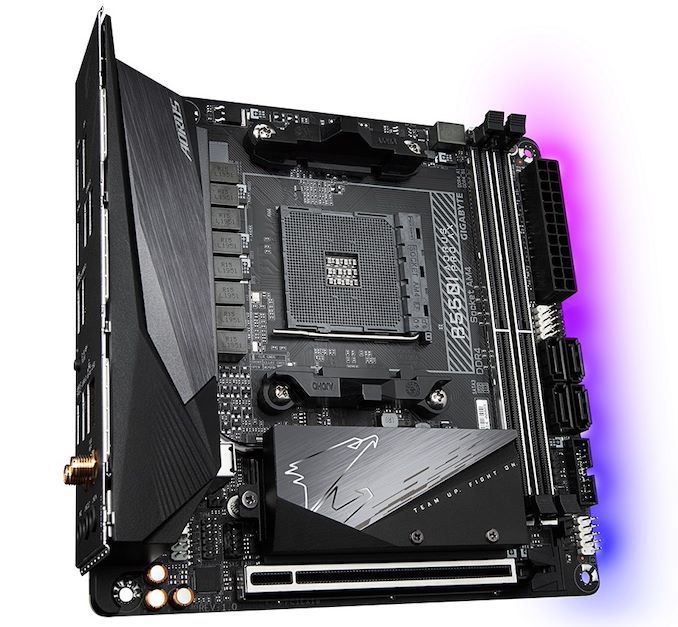
The GIGABYTE B550I Aorus Pro AX also includes four straight-angled SATA ports, one PCIe 4.0 x4 M.2 slot, and an additional PCIe 3.0 x4 M.2 slot, with a full-length PCIe 4.0 x16 slot. In terms of power, the GIGABYTE B550I Aorus Pro AX has a direct 8-phase power delivery with eight premium Intersil ISL99390 90 A power stages and is controlled by an ISL229004 PWM controller. This is impressive not only for a mini-ITX motherboard but one designed for the ‘budget’ B550 chipset.
Focusing on connectivity, this board has dual HDMI 2.0 outputs as well as DisplayPort 1.4, a single Realtek RTL8125BG 2.5 GbE controlled Ethernet port, and an Intel AX200 Wi-Fi 6 interface. There are also plenty of USB ports to make use of, with one USB 3.2 G2 Type-C, one USB 3.2 G2 Type-A, and four USB 3.2 G1 Type-A ports, as well as a handily located Q-Flash firmware update button. In an upgrade to supported memory for B550, the B550I Aorus Pro AX also supports up to DDR4-5300 memory.
The GIGABYTE B550I Aorus Pro AX has an MSRP of $180 and is currently available at both Amazon and Newegg. On the whole, GIGABYTE’s board has the right blend of premium features to be useful while still coming in at a price under ASRock’s $200 premium B550 ITX board or ASUS’s also-$200 B550 mini-ITX offering. Out of all of the AM4 mini-ITX models on the market, some X570 models include Thunderbolt 3 – notably the ASRock X570 Phantom Gaming-ITX/TB3 – but it does cost more with an MSRP of $240. Overall the GIGABYTE B550I Aorus Pro AX is our top mini-ITX pick out of all the AMD AM4 models when taking quality, feature set, and pricing into consideration. We’ve also recently had this on the best bench too, and the review should be coming very soon.
Money Is No Object
GIGABYTE X570 Aorus Xtreme
When it came to selecting our money is no object pick, the higher tier models’ current stock levels caused us a little bit of a headache. Both the MSI MEG X570 Godlike and the GIGABYTE X570 Aorus Xtreme haven’t been too easy to get hold of, but we’ve opted to make the GIGABYTE our pick once again. One of the standout boards that honed our interest during testing was the GIGABYTE X570 Aorus Xtreme, which is the only X570 board to include a passively-cooled chipset heatsink. So for our money is no object selection, there isn’t a more well-rounded X570 flagship than GIGABYTE’s board.
However, what made the X570 Aorus Xtreme stand out came in our power delivery thermal testing, which showed how far GIGABYTE has come in its power delivery implementation and design. With a true 14-phase power delivery for the CPU with the Infineon XDPE132G5C spearheading the design, we saw excellent performance, overclocking, and efficiency. This is perhaps more important for users looking to overclock the latest Ryzen 5000 processors which already come with pretty high boost clock speeds.
You can read our full review here:
The GIGABYTE X570 Aorus Xtreme Motherboard Review: Fanless AM4
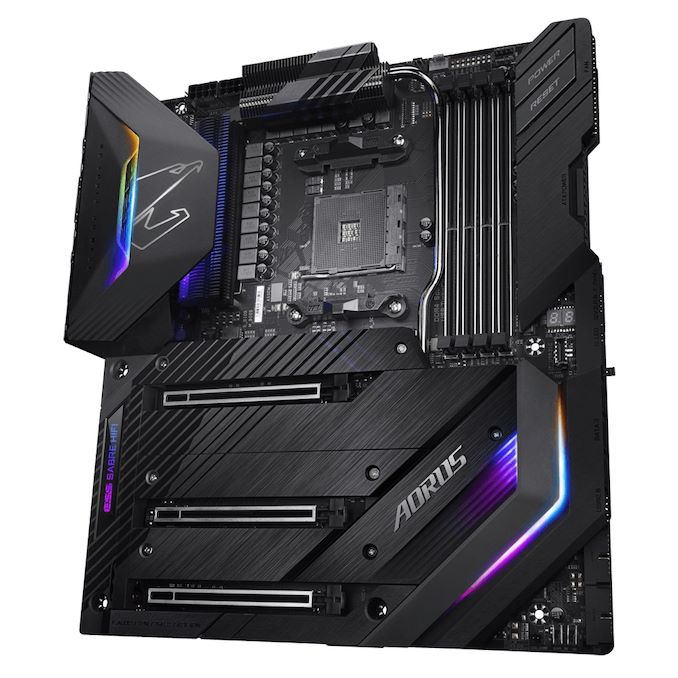
The E-ATX board has a high-end feature set in line with its price. In terms of networking support, the board includes an Aquantia AQC107 10 G Ethernet controller, an Intel I211-AT Gigabit controller, and an Intel AX200 Wi-Fi 6 + BT 5.0 wireless interface. For storage, there are three PCIe 4.0 x4 slots and six SATA ports that support RAID 0, 1, and 10 and support for up to DDR4-4400 and 128 GB across four memory slots. A Realtek ALC1220-VB HD audio codec powers the rear panel audio, while an ESS Sabre 9218 DAC helps to bolster the quality of the front panel audio.
The GIGABYTE X570 Aorus Xtreme also has dual BIOS support, which is handy for BIOS Flashback and allows one to be used for extreme overclocking, while the other could be used for more stable 24/7 settings. Focusing more on the Xtreme element, GIGABYTE also includes an overclockers toolkit with a power button, reset button, voltage measurement points for better accuracy, and an OC PEG power connector.
With a current price tag of $700, it’s not a board for those with shallow pockets. It’s also one of the best X570 and AM4 based models currently on the market from a performance perspective. For the few who can justify a $700 board, the GIGABYTE X570 Aorus Xtreme offers a robust premium feature set, looks good with its full cover thermal armor, and it offers highly efficient and reliable power delivery. In other words, it ticks the majority of boxes for both enthusiasts and gamers looking for a high-end foundation for a powerful gaming system.

